If clothes are architecture because they must represent and cover us at the same time, then the architect can be seen as a designer. But if that architect is Cristiano Toraldo di Francia, then the project, whether it is a building or a dress, is formed and acquires value or even exists, from the moment in which it is inhabited. It is not by chance that Toraldo di Francia has always had a weakness for Roland Barthes, who in fact talked about the dress as “that through which the body becomes a carrier of signs”, bringing forward the experimental creativity of Superstudio, founded by himself in 1966, in rethinking design and architecture in a radical way.
Radical architect, then, Cristiano Toraldo di Francia comes out in these days with a book published by Quodlibet Studio Design, which is also a sort of autobiography full of images related to the experience of Superstudio but above all to ‘Ri-vestire’, the title of the book (subtitled ‘Dressing the planet / dressing a body: from Supersuperficie to Librabito’) and the name of the lab-course that the architect teaches within the Industrial Design Course of the School of Architecture and Industrial Design of the University of Camerino (Unicam), in the Marche (which is also the eco-à-porter region!). And ‘Ri-vestire’ is precisely the reason why today it occupies, indeed, inhabits, the blog page.
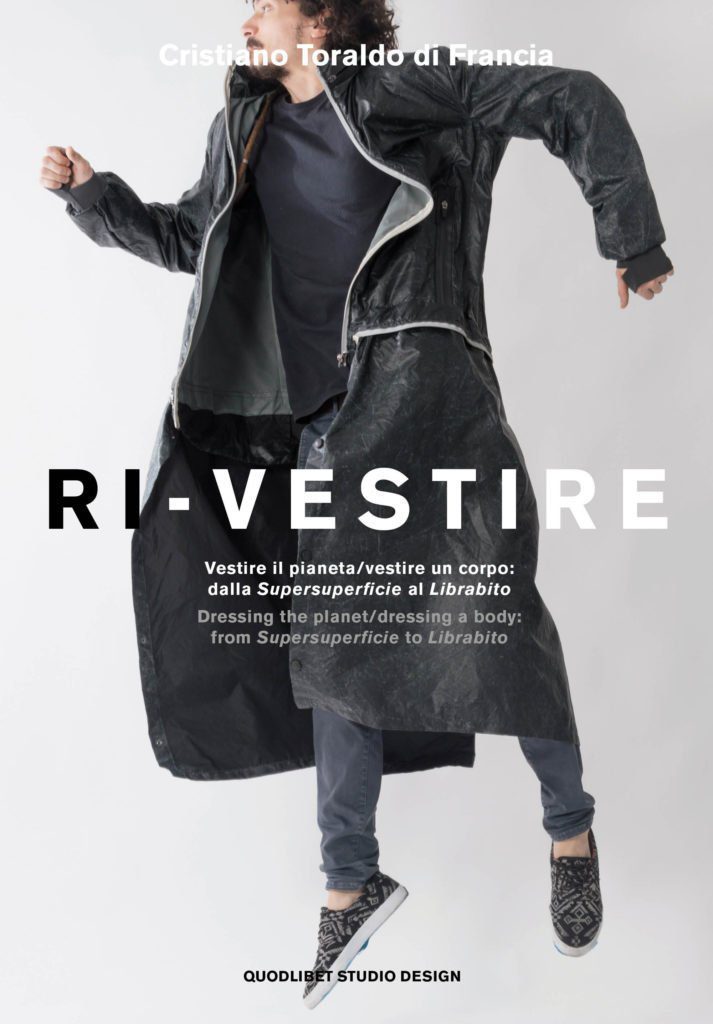
Since 2011 Toraldo di Francia has been interested in the fashion system and how it is part of a consumerist economy and ‘part of a cycle of a continuos change of models’ and for a radical like him, the transition to and for a radical like him, the transition to seeking and experimenting (critical) strategies related to the production-consumption system, is spontaneous. In ‘Ri-vestire’, therefore, together with his students, he puts into practice deconstruction, contamination, recycling and reuse, ‘taking into consideration the importance in the virtual era of regaining the ‘well made’ by hand, which in this case is favored by the typical know-how of the Marche region, rich in a tradition that from the activity of the spinning mills goes to the handmade suit.
Clothes, like the objects re-thought at the time of Superstudio, reveal its meaning in the moment in which they are used, worn, they become ‘inhabited space’ and the fabrics used to create them become ‘basic material, starting point of the design idea’. The ‘Ri-vestire’ course gives way to a series of creative-design exercises that move in various territories, from art to architecture, from design to performances and events that focused on the human body and its comfort. The sustainability of the materials used (from recycling to disposal), the deconstruction of clothes, the freedom of interpretation and the do-it-yourself are some of the rules of experimentation.
So here comes a whole series of stories related to the construction-deconstruction of the dress on the body of the wearer, which in turn cause passions, desires, emotions. Like those related to ‘Speed Former’, a thesis report by Chiara Tripodi, who made a backpack/vest with the off-cuts of the leftover textiles coming from Trame, a small handicraft company from Corropoli, municipality of Teramo, which transforms and manufactures the fabrics through various types of techniques including quilting, such as the one with cotton wool inside. Chiara created her product starting from a paper model to create the shape of the backpack/vest, then she connected the fabrics at her disposal using three zippers to close the backpack and the front part of the vest and some rivets for a part of the collar. The product can be decomposed into two transformable modules: a backpack and a hood that respectively get transformed into a vest and a handbag.
‘Daily wear’ wants to highlight the ‘by hand’ ability that has been ousted by the digital, using a material that is usually foreign to the textile world: newspapers, especially. ‘The requirement of the use of paper and the use of scotch tape only, rather than mechanical sewing, became an exercise for folding and complex weavings, resulting in wearable sculptures made with wire supports’. Here Toraldo di Francia reminds that in general the paper model is always made of tissue paper and that even in his profession as an architect he has always favored this type of paper as a support for sketches of details or industrial design. Moreover, in terms of recovery, the paper is the result of manufacturing using linen and hemp cloth rags.
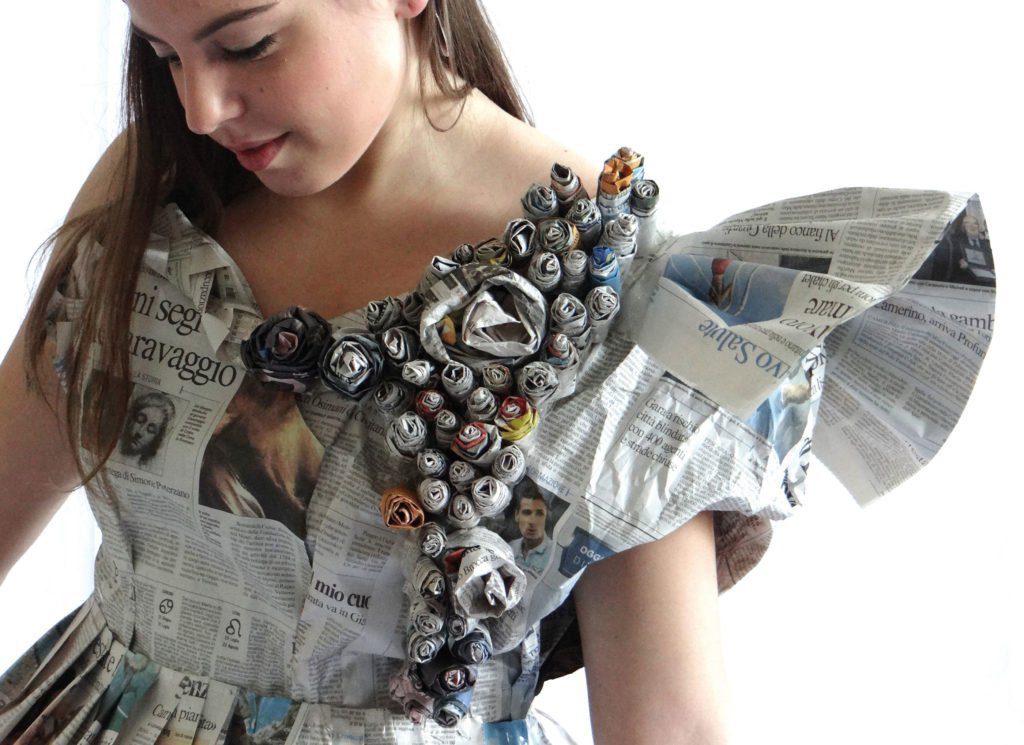

courtesy of Quodlibet edizioni
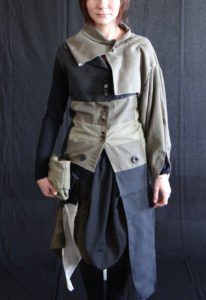

‘Three jackets’ comes from a gift of 140 slightly dated jackets but with up-to-date fabrics; each student received three jackets, with the task of disassembling and reassembling them to create a new complete suit; here is the one who turns the lining inside out and who wears the sleeves towards the legs, creating trousers. And in this case it is impossible not to think about the destructions signed by Martin Margiela, now become Maison Margiela.
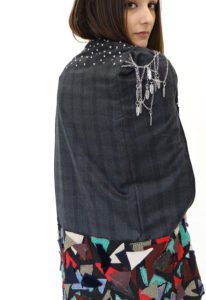

Recycling again, this time for the realization of an ‘Overcoat’; here Toraldo di Francia makes a pleasant flashback about his childhood when in 1952, following his father who goes to teach at the Eastman Kodak University in the city of Rochester, United States, he arrives at school with his overcoat reassembled from another one belonged to his grandfather and he discovers that his classmates wear padded wind jackets and fur caps. To each country its own style. However, returning to the overcoat, it is interesting to reflect on the fact that it is, after all, a strip (abundant) of fabric that ‘eliminates the vertical division of the body above and below the waist’ putting at the second level ‘the typological division, so functional for the market, of distinguishing clothes for the bust from clothes for the legs’. The design exercise of ‘Overcoat’ gets back to the specifics of the construction of the garment, recycling the end of roll remnants given by three different factories, often working directly on the body. And the discourse on the dress returns, becoming a carrier of meanings, shaping the body that wears it and questioning it, altering its symmetries and proportions, as do Japanese designers who give clothing a meta-stylistic value, a mask, an escape from the ‘glossy perfection’.
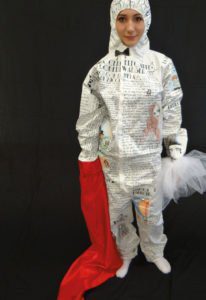

The design exercises of Toraldo di Francia and his students can only culminate with the ‘Dress-book’, constructed and illustrated starting from texts of literature, philosophy, architecture donated by the same Quodlibet publishing house and applied to a Tyvek overall, synthetic fabric similar to paper easily cut but difficult to tear, ‘efficient protection from fine dusts – writes Toraldo di Francia – but not from thoughts’.
Radical in architecture, Cristiano Toraldo di Francia becomes radical in fashion design, undermining the principle of homologation to a single large market, which now, from the 60s to today (and today more than then), seems to enslave the world. And he does so by resorting to the principles of recycling, reuse, vintage, creative handicraft that become critical tools and, yes, at this point it can be said, revolutionary. For the planet, the environment, fashion and for ourselves.



![Mono[PA6] by Freitag, a prova di economia circolare](https://eco-a-porter.com/wp-content/uploads/2024/05/freitag_monopa6_hero_master_16zu9_fin_01.2_0-218x150.jpg)














